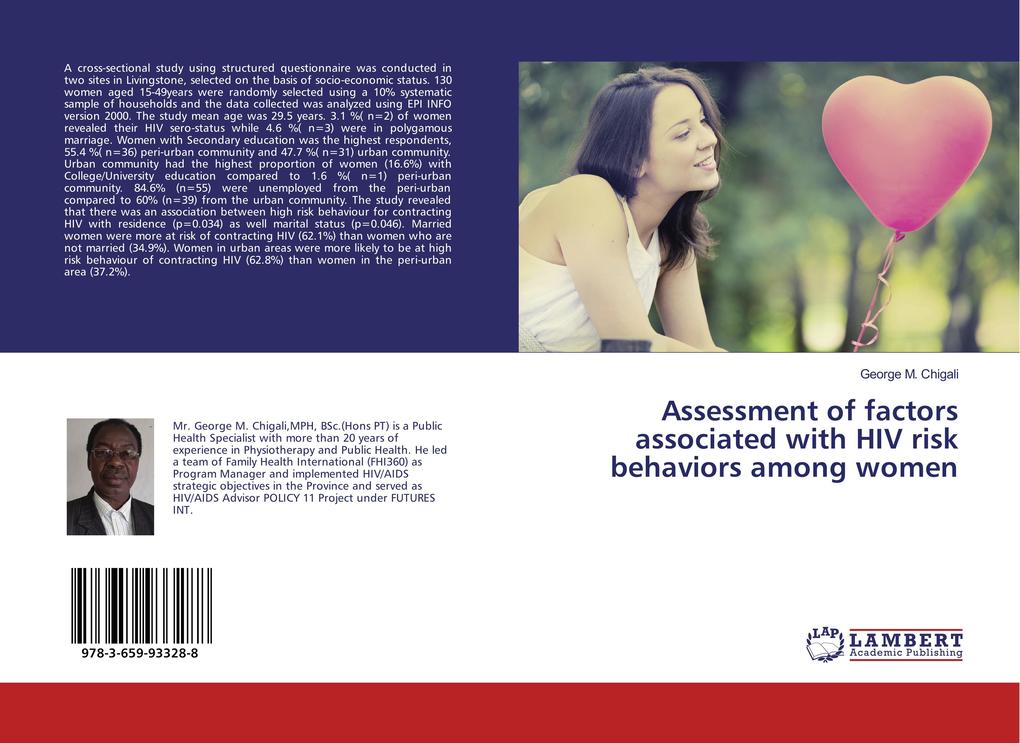
Zustellung: Mi, 09.07. - Sa, 12.07.
Versand in 5 Tagen
VersandkostenfreiBestellen & in Filiale abholen:
A cross-sectional study using structured questionnaire was conducted in two sites in Livingstone, selected on the basis of socio-economic status. 130 women aged 15-49years were randomly selected using a 10% systematic sample of households and the data collected was analyzed using EPI INFO version 2000. The study mean age was 29. 5 years. 3. 1 %( n=2) of women revealed their HIV sero-status while 4. 6 %( n=3) were in polygamous marriage. Women with Secondary education was the highest respondents, 55. 4 %( n=36) peri-urban community and 47. 7 %( n=31) urban community. Urban community had the highest proportion of women (16. 6%) with College/University education compared to 1. 6 %( n=1) peri-urban community. 84. 6% (n=55) were unemployed from the peri-urban compared to 60% (n=39) from the urban community. The study revealed that there was an association between high risk behaviour for contracting HIV with residence (p=0. 034) as well marital status (p=0. 046). Married women were more at risk of contracting HIV (62. 1%) than women who are not married (34. 9%). Women in urban areas were more likely to be at high risk behaviour of contracting HIV (62. 8%) than women in the peri-urban area (37. 2%).
Produktdetails
Erscheinungsdatum
09. August 2016
Sprache
englisch
Seitenanzahl
88
Autor/Autorin
George M. Chigali
Verlag/Hersteller
Produktart
kartoniert
Gewicht
149 g
Größe (L/B/H)
220/150/6 mm
Sonstiges
Paperback
ISBN
9783659933288
Bewertungen
0 Bewertungen
Es wurden noch keine Bewertungen abgegeben. Schreiben Sie die erste Bewertung zu "Assessment of factors associated with HIV risk behaviors among women" und helfen Sie damit anderen bei der Kaufentscheidung.









